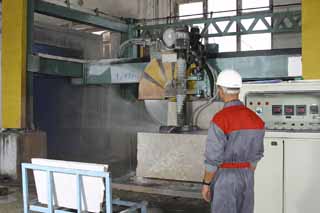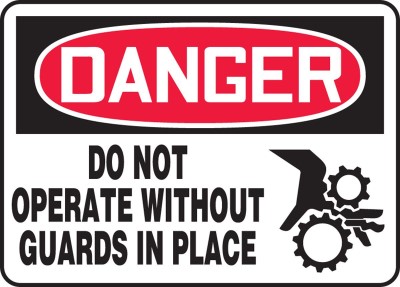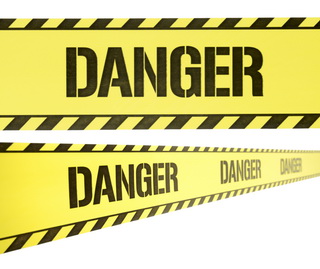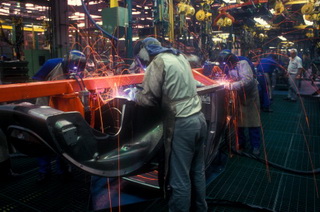Operators of consumer products and industrial machines frequently are exposed to potential hazards. Such hazards include moving or hot parts, toxic chemicals, exposed electrical circuits and material that may be ejected at high speed. However, hazards like these cannot always be eliminated without impacting the usefulness of a piece of equipment or product. Who would buy a table saw with no blade? How functional would a washer be with no spin cycle? Who would want a lawnmower that did not have a fast spinning blade with a sharp edge? In order for many products to be effective, potential hazards must exist. However, these hazards can be minimized by proper guarding.
Manufacturers use guards to prevent people from accidentally coming into contact with a hazard that cannot be eliminated without impacting the product's function. Guards can be as simple as a cover concealing a moving part. For example, the door on a washing machine prevents a person from placing a hand inside the appliance when the rotor is spinning. Similarly, the cover on the back of a television helps to prevent inadvertent contact with energized circuits. Lastly, a cover plate on an electrical outlet protects a small child from placing a finger into the outlet.
Machine and product guards can be more sophisticated when required. Common examples include light curtains across the front of a punch press which prevent the press from cycling if the operator reaches inside a particular area. A lever on a lawnmower's handle has to be squeezed for the mower to be started and to keep running. An interlock switch on the door of a washing machine stops the machine if the door is opened during the spin cycle. The shift lever of a car is forced to remain in Park unless the driver depresses the brake pedal.
“To be effective guards have to fulfill some basic principles.” says Dr. Clyde Richard, CED's premier expert on machine and product guarding. “Guards should not change the operation of a piece of equipment or product to the point that the machine is non-functional, inefficient or difficult to use. A guard should not protect against one hazard while introducing additional hazards. Machine or product guards should not create a false sense of security and therefore become a danger. They should not be difficult to use and/or reduce the utility of the equipment or product, to the point where the guard is taken off and discarded,” indicates Dr. Richard.
Although guards are put in place for protection from hazards, the intent of a guard can be defeated. For instance, the chain guard on a bicycle can be taken off and discarded, a lawnmower's safety lever can be taped to the mower's handle, or the interlock switch on a washing machine's door can be taped in the closed position and/or electrically rewired, therefore bypassing the safety mechanism. Modern machine safety devices, however, have features to make tampering or bypassing more difficult.
Ultimately, the user of the machine or product has the responsibility to assure that a guard put in place will remain in place and functional. Users should not look for ways to defeat engineered safety systems in consumer products. Employers should require that guards and other safety systems remain in place, are used, and are not bypassed. Employers need to enforce and supply OHSA approved safety devices and protection to avoid potential accidents. If any employee shows disrespect for a machine guard or other safety practices, the employee should be shown the importance of such devices and of working safely.
Submit a case or claim online.
Contact a CED Engineer in your region.






